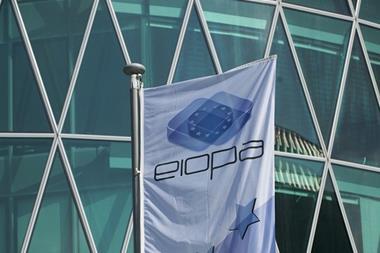The European Insurance and Occupational Pensions Authority (EIOPA) is not intent on introducing solvency funding requirements for pension funds, the supervisory authority’s executive director has said.
Speaking at a PensionsEurope conference in Brussels, Fausto Parente said EIOPA was working on fostering an internal market for pensions.
He acknowledged fears among pension funds and national bodies that the authority could seek to introduce rules for defined benefit (DB) pension funds similar to the insurance sector’s Solvency II regime, but insisted there was no appetite for this at EIOPA.
“It’s a debate that was there in the past,” Parente said.
As a European institution, EIOPA needed a common metric to measure the risk of a pension fund, but there was “no appetite to apply Solvency II”, he added.
He did not know how to assure the industry that fears of such a move were not grounded, he said.
The new IORP II Directive, which is at various stages of implementation by member states across the European Union, has ruled out solvency capital requirements for pension funds. EIOPA last year said it would not be advising on harmonising capital or funding requirements.
However, some in the industry are still concerned that EIOPA would try to introduce such requirements “through the back door”, pointing to the authority’s use of the common framework methodology for its stress tests on pension funds.
Janwillem Bouma, chair of PensionsEurope, the European workplace pensions trade association, noted and welcomed the assurance that Parente had given.
Parente said Solvency II and the revised IORP Directive were two very different legislative frameworks, one based on maximum harmonisation and the other on minimum standards. EIOPA’s role with respect to IORP II was to help ensure a more consistent application of those standards by national supervisors and to look out for best practices, he said.
Parente said he knew there was a fear EIOPA would issue a large amount of guidelines as it did in preparation for the implementation of Solvency II, but that pensions were “a completely different story”, being a much more national market.
He said that although EIOPA was looking to foster an internal market for pensions – for example via the pan-European personal pensions product (PEPP) and the idea of a pan-European occupational defined contribution (DC) framework – it was completely aware of the differences between the insurance and pension sectors.
Parente also defended EIOPA against criticism that the authority had overstepped its remit on pensions with its own initiative work. He said EIOPA needed to be able to carry out work on its own initiative if it was to fulfil its role of advising the legislative powers.
He also stressed that, when EIOPA issued guidelines, it had the backing of the heads of the national authorities who are EIOPA members.
“I cannot share many of the criticisms,” he said.
Manuela Zweimüller, head of the policy department at EIOPA, later made a similar point, saying own initiative work was within EIOPA’s mandate. She seemed to express exasperation at criticism about the authority’s own initiative work, suggesting she ought to propose abolishing the term.












No comments yet